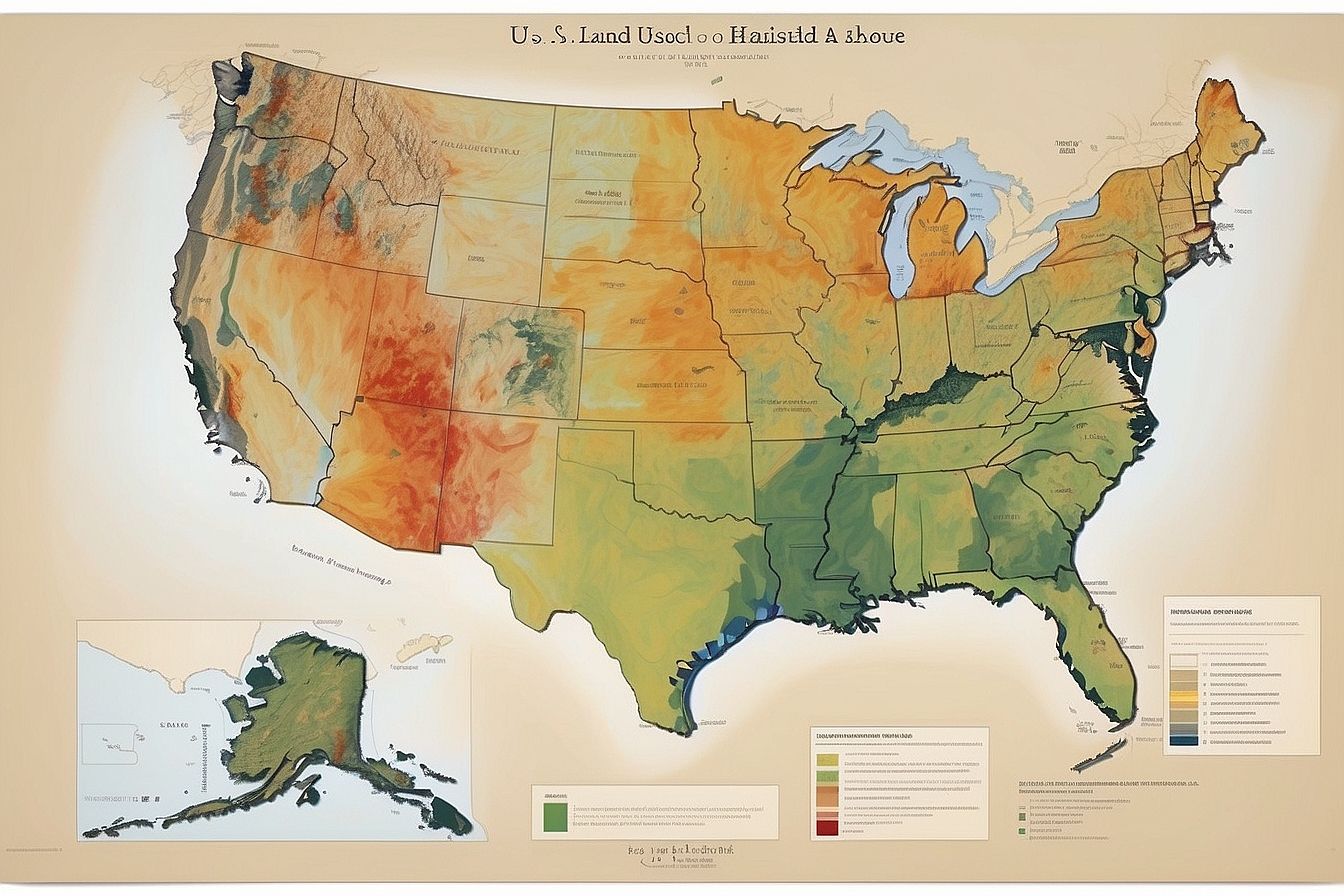Golf courses, with their lush fairways and tranquil ponds, offer a picturesque escape from the hustle and bustle of daily life. Yet beneath this verdant facade lies an environmental concern that simply cannot be overlooked.
It’s quite astonishing to learn that these manicured landscapes are quenching their thirst with around 2.08 billion gallons of water every single day across the United States. Our foray into the heart of this issue reveals not only the scale of consumption but also ways we can begin to mitigate it.
So why don’t we get our heads together and drive towards a more sustainable future on the greens? Let’s embrace a forward-thinking approach where both nature and our beloved sport can flourish side by side.
Key Takeaways
- Golf courses consume a staggering 2.08 billion gallons of water daily in the US, pressuring local water supplies and ecosystems.
- Deforestation for golf course construction removes essential carbon-storing trees and disrupts wildlife habitats, contributing significantly to climate change.
- The use of chemicals and pesticides on golf courses can harm soil health, risking contamination of water sources and endangering biodiversity.
- Sustainable practices like using organic fertilisers, natural pest control methods, efficient irrigation systems, and native plant landscaping help reduce environmental damage.
- Transitioning to alternative turf options such as artificial grass or drought-resistant plants cuts down on water usage and maintenance costs.
The Environmental Impact of Golf Courses
Golf courses have a significant environmental impact, including deforestation and land clearing for construction, high water consumption for irrigation, use of pesticides and chemicals, and disturbance of wildlife and soil relationships.
These factors can contribute to climate change, habitat destruction, and biodiversity loss.
Land clearing and deforestation
We recognise the environmental impact of golf courses, specifically how land clearing and deforestation can wreak havoc on ecosystems. To create the vast green fairways and putting greens, large areas of natural habitat are often removed.
This process not only strips away trees essential for carbon sequestration but also disrupts local flora and fauna. By eliminating these crucial wildlife habitats, we compromise biodiversity and contribute to climate change.
Our commitment to environmental sustainability pushes us to scrutinise every action taken in developing golf courses. The loss of trees that once played a key role in storing carbon is alarming since it increases our collective carbon footprint significantly.
Eradicating forests for new fairways means less carbon dioxide being absorbed from our atmosphere, accelerating global warming at an alarming rate. Next, we need to address another pressing issue: the high water consumption needed for course irrigation.
High water consumption for irrigation
Golf courses require substantial amounts of water for irrigation, increasing the demand on local water resources. This high consumption can strain freshwater supplies and impact surrounding ecosystems.
Groundwater depletion from excessive irrigation can also compromise the availability of clean drinking water for nearby communities. Moreover, excess water usage contributes to soil erosion and nutrient leaching, affecting the overall health of the area’s natural environment.
Efforts to reduce golf course water consumption are vital in promoting environmental sustainability. Implementing efficient irrigation systems, such as drip or sensor-based technologies, can significantly decrease water usage while maintaining turf quality.
Use of pesticides and chemicals
Minimising high water consumption is just the start; addressing the use of pesticides and chemicals on golf courses is equally significant. Integrating sustainable pest management methods, like natural predators and organic fertilisers, can reduce reliance on harmful chemical treatments.
Implementing precise application techniques also prevents unnecessary overspill of pesticides into surrounding ecosystems while safeguarding biodiversity and soil health. Conserving water usage should go hand in hand with mindful pesticide and chemical control for an all-encompassing approach to environmental stewardship.
Overall, considering alternative turf management practices alongside eco-friendly pest control solutions can significantly diminish the ecological footprint associated with traditional pesticide and chemical applications used on golf courses.
Disturbance of wildlife and soil relationships
Golf courses disturb the balance of wildlife and soil relationships through habitat removal and fragmentation. These developments can result in displacement, disruption of natural migratory routes, and diminished biodiversity.
The constant presence of golfers, maintenance staff, and visitors also contributes to noise pollution, disturbing the natural habitats of local wildlife. Furthermore, the use of chemical pesticides and fertilisers on golf courses can have detrimental effects on soil health, potentially leading to contamination of water sources and further endangering local ecosystems.
To mitigate these issues, sustainable land management practices should be prioritised to minimise disturbance to wildlife and soil relationships. This includes preserving green spaces for habitats, implementing erosion control measures to protect soils from degradation, and advocating for reduced pesticide usage.
Ways Golf Courses Can Reduce Their Environmental Impact
Implementing sustainable practices, using alternative forms of turf and landscaping, and conserving water usage are key ways golf courses can reduce their environmental impact. To learn more about how these practices can benefit the environment, read the full blog post.
Implementing sustainable practices
To reduce the environmental impact of golf courses, we can implement sustainable practices such as using organic fertilisers and natural pest control methods. Conserving water through efficient irrigation systems and native plant landscaping also plays a vital role in ensuring sustainability.
Additionally, creating wildlife habitats within the golf course area helps to restore ecological balance, promoting biodiversity and reducing disturbances to local flora and fauna.
Incorporating renewable energy sources for powering operations, minimising chemical usage through integrated pest management strategies, and adopting eco-friendly maintenance equipment are essential steps towards sustainable golf course management.
Using alternative forms of turf and landscaping
Golf courses can mitigate their environmental impact by incorporating alternative forms of turf and landscaping. Utilising native grasses, wildflowers, and drought-resistant plants reduces the need for excessive irrigation and chemical fertilisation while promoting biodiversity.
Implementing eco-friendly designs such as naturalised areas and wetland buffers further enhances habitat restoration and minimises disturbance to wildlife populations. By embracing sustainable landscaping practices, golf courses can play a crucial role in preserving local ecosystems and contributing to overall environmental conservation efforts.
Furthermore, exploring innovative turf alternatives like artificial grass or organic mulch can significantly decrease water consumption and limit the use of harmful chemicals. Opting for these solutions not only helps reduce maintenance costs but also showcases a commitment to ecological responsibility within the golfing community – an essential aspect in supporting broader environmental sustainability goals.
Conserving water usage
Transitioning from alternative forms of turf and landscaping, conserving water usage is a crucial aspect of reducing the environmental impact of golf courses. By incorporating efficient irrigation systems, such as drip or smart watering technology, golf courses can significantly minimise water consumption while maintaining healthy turf conditions.
Additionally, implementing drought-resistant grass species and native vegetation reduces the reliance on irrigation, further promoting sustainable water usage across the course. Incorporating these measures not only preserves valuable water resources but also aligns with our commitment to environmental conservation.
Innovative solutions like rainwater harvesting and greywater recycling systems also play a pivotal role in sustainable water management on golf courses. These approaches present an opportunity to reduce reliance on traditional water sources while addressing concerns about excessive water consumption in golf course maintenance practices.
Conclusion
In conclusion, golf courses have a significant environmental impact, including deforestation and disturbance of wildlife. Sustainable practices can help minimise this impact, such as using alternative turf and conserving water usage.
It’s crucial for the golf industry to prioritise environmentally friendly approaches to mitigate its effects on the ecosystem.
FAQs
1. What are the environmental impacts of developing new golf courses?
Developing new golf courses can have several environmental impacts, including deforestation, land clearing, and wildlife disturbance.
2. How does water usage on golf courses affect the environment?
Golf courses often use large amounts of water for irrigation, which can lead to water scarcity and affect local ecosystems.
3. Do golf courses contribute to air and noise pollution?
Yes, operations like mowing and maintenance on golf courses can create dust and noise pollution that affects nearby communities.
4. Can nitrogen from fertiliser used on golf courses cause pollution?
Excessive use of nitrogen-rich fertilisers on golf fairways can lead to nitrogen pollution in surrounding bodies of water.
5. Are there ways to lessen the negative effects of golf courses on the environment?
Implementing measures such as water conservation techniques and conducting a thorough environmental impact assessment before construction could reduce a course’s ecological footprint.





